Abstract
Ventilatory capacity was measured before and after exposure to high concentrations of wheat dust in 24 men, 18 of whom were similarly studied while working with calcium phosphate rock. Changes in ventilatory capacity were examined in relation to respiratory symptoms as commonly elicited in occupational surveys, and to the presence or absence of a productive cough on request and under observation. A significant decrease in the forced expiratory volume at one second was observed within half an hour of beginning work in the wheat dust, and this decrease was maintained throughout the work shift. A smaller significant decrease was found on exposure to phosphate rock over several hours, no significant change occurring within the first half-hour. Greater or more consistent decreases were recorded in those men who gave a history of persistent cough and sputum, and more particularly in those who had a productive cough on request, than in those without these features. A history of symptoms on exposure failed to define a group showing any more severe ventilatory reaction on exposure to wheat dust than the average. Some of the factors influencing the history of symptoms in occupational populations are reviewed, and the advantage of an objective sign, as provided by a deliberate cough, is indicated in defining an `abnormal' group within such a population.
Full text
PDF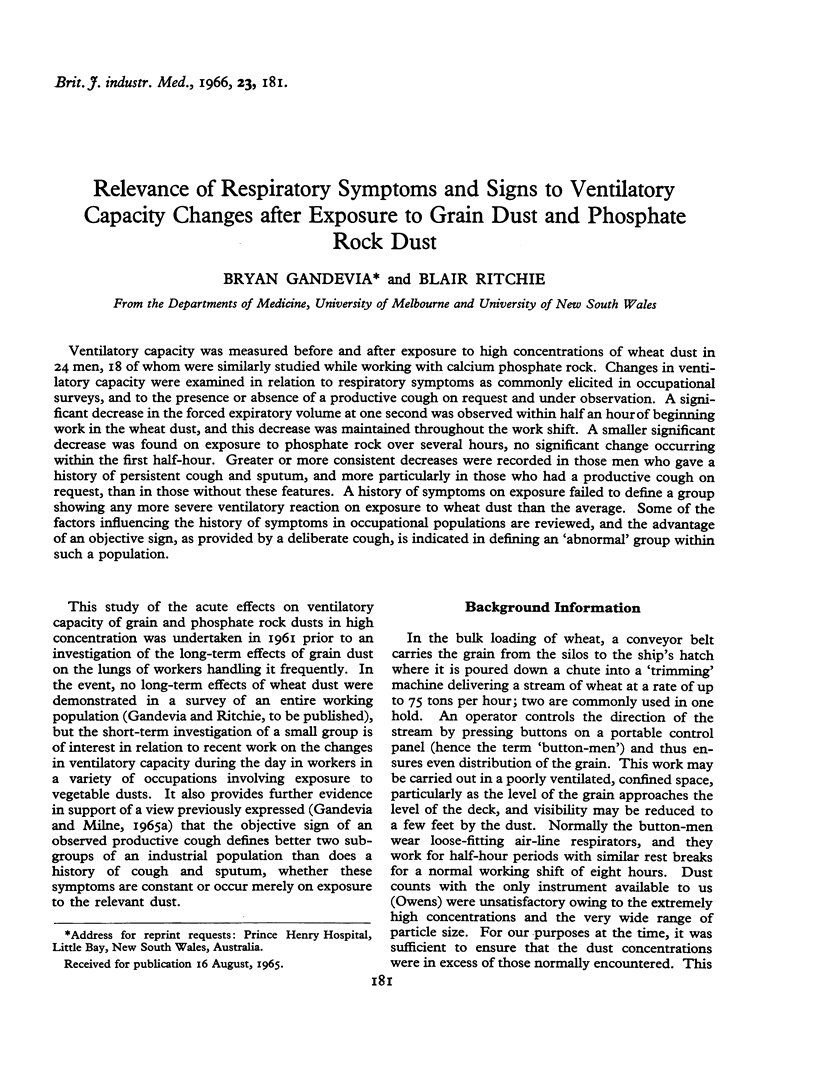
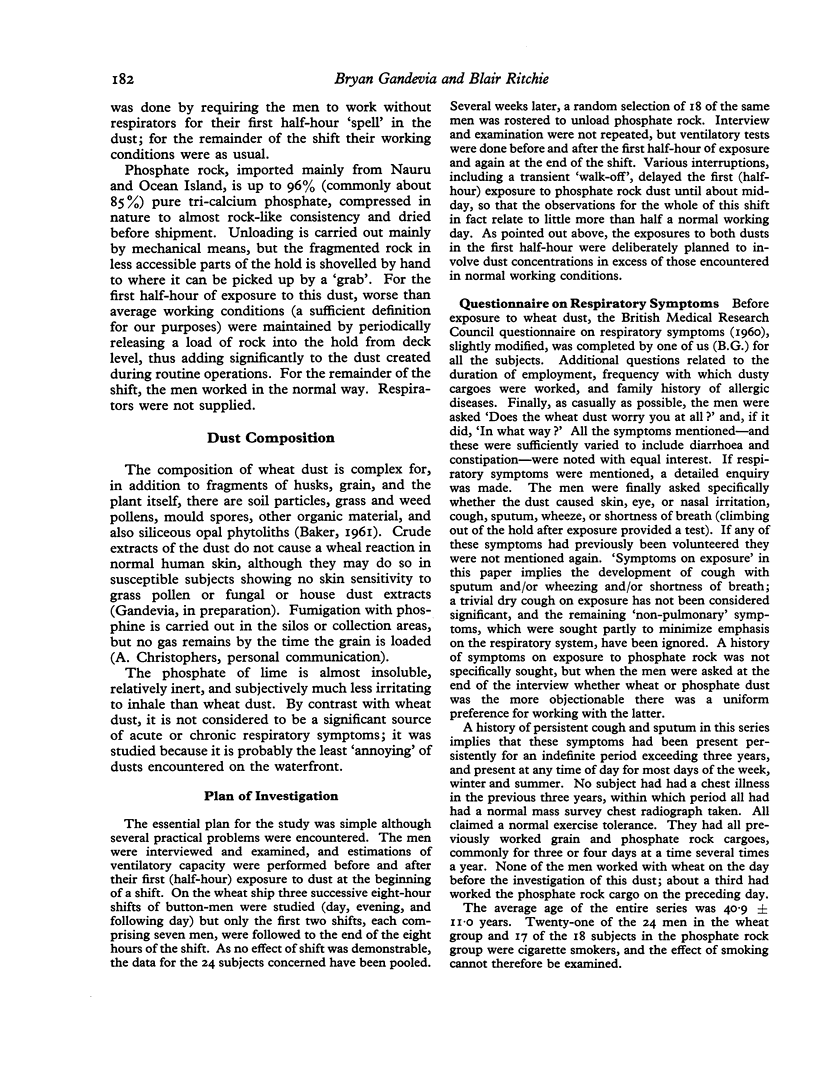
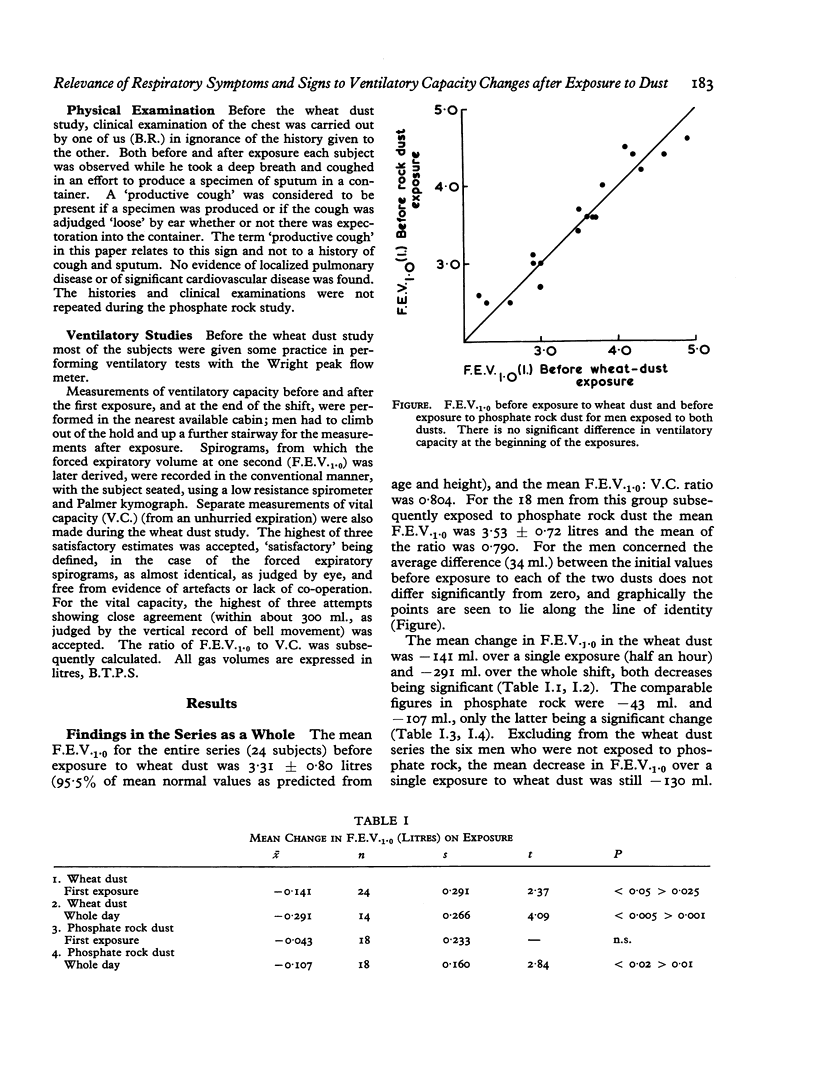
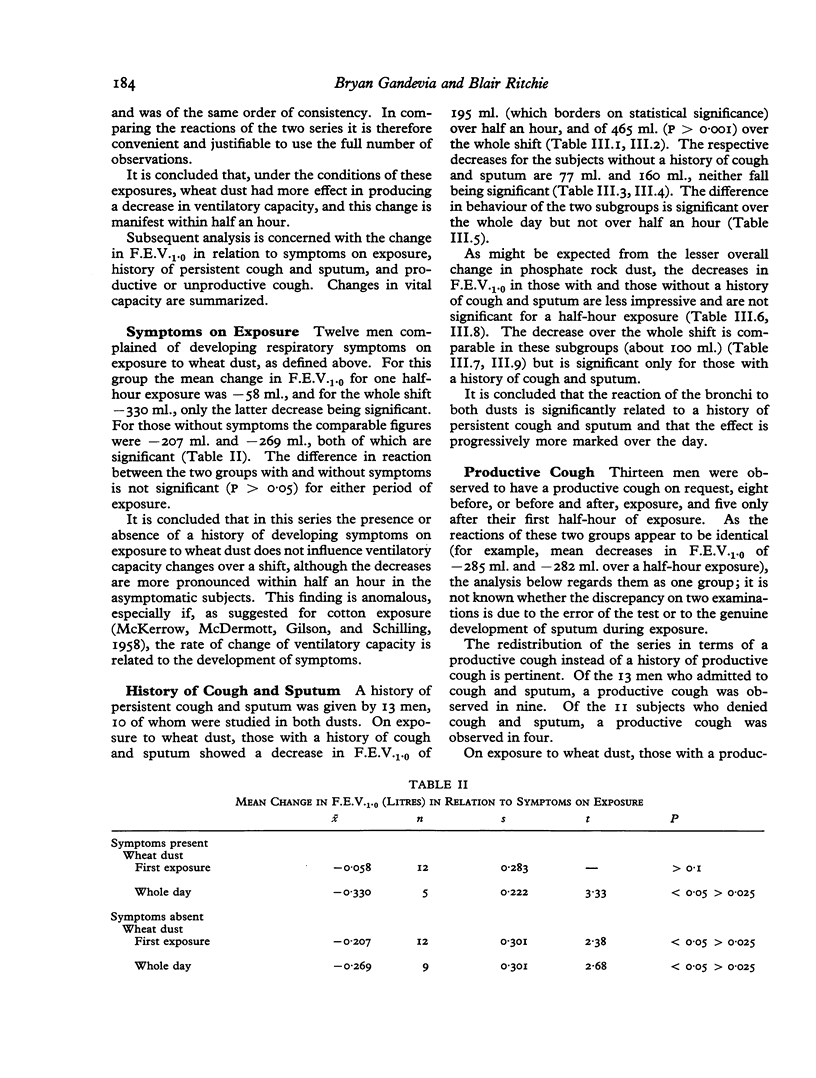
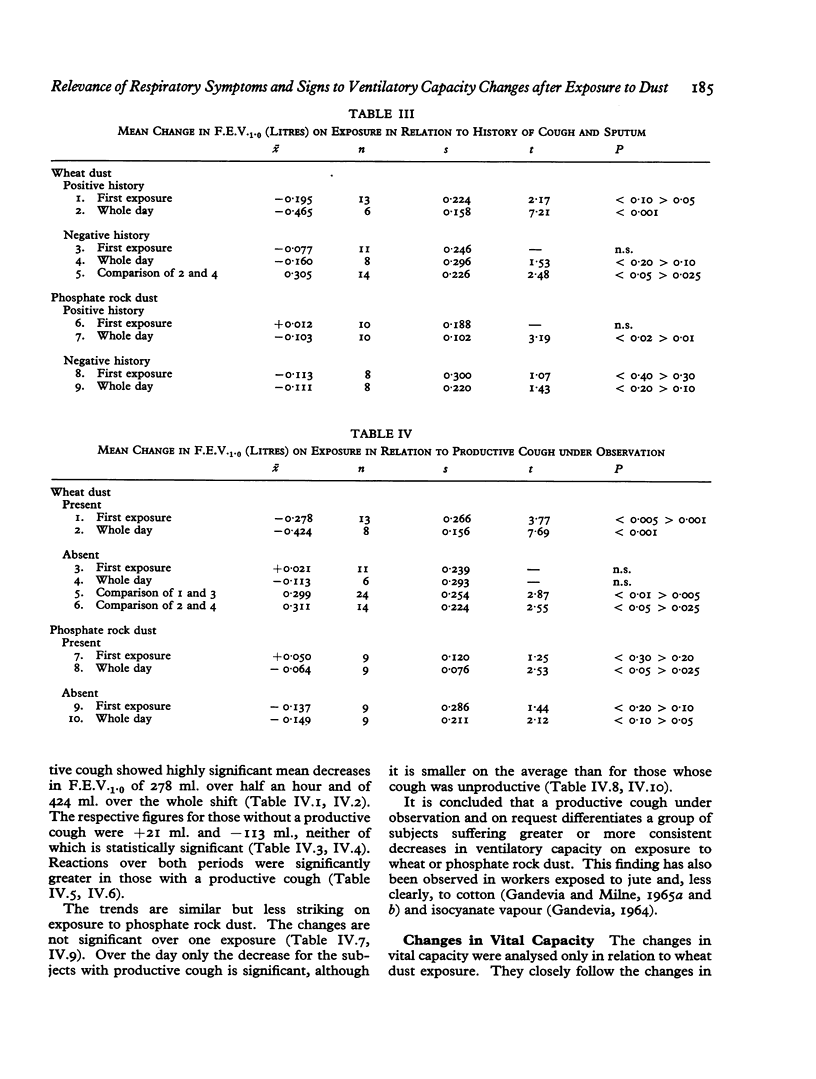

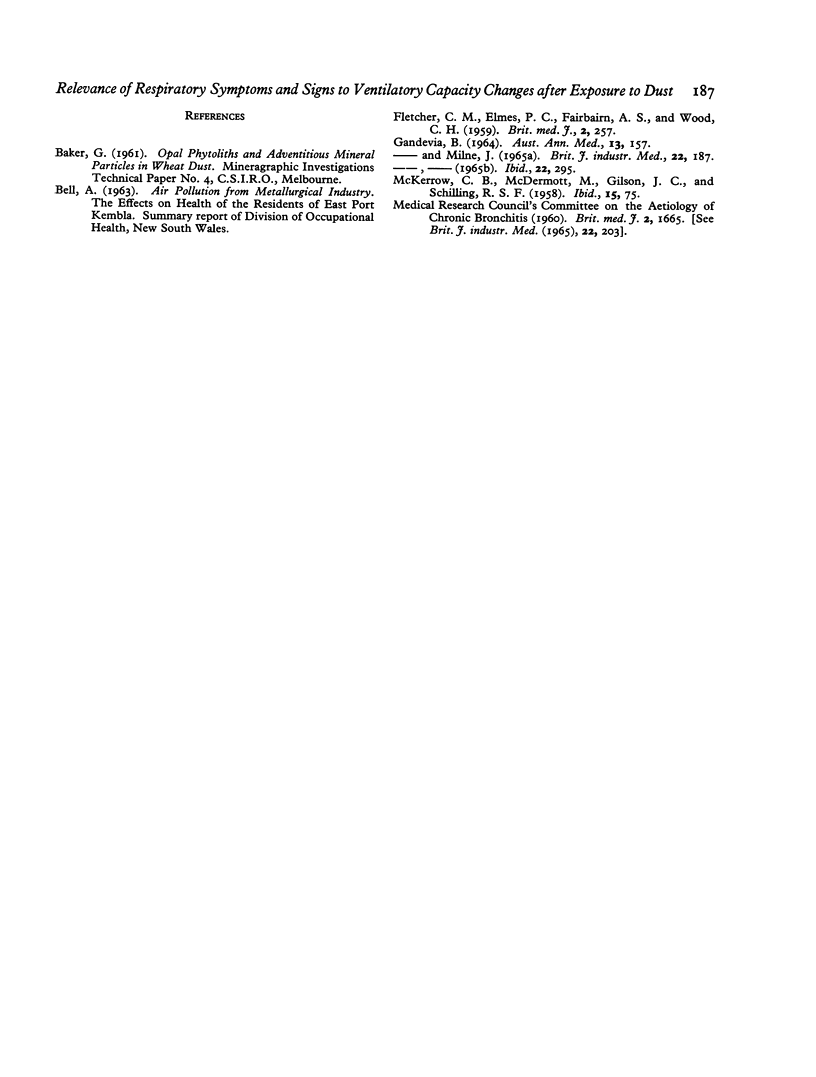
Selected References
These references are in PubMed. This may not be the complete list of references from this article.
- FLETCHER C. M., ELMES P. C., FAIRBAIRN A. S., WOOD C. H. The significance of respiratory symptoms and the diagnosis of chronic bronchitis in a working population. Br Med J. 1959 Aug 29;2(5147):257–266. doi: 10.1136/bmj.2.5147.257. [DOI] [PMC free article] [PubMed] [Google Scholar]
- GANDEVIA B. RESPIRATORY SYMPTOMS AND VENTILATORY CAPACITY IN MEN EXPOSED TO ISOCYANATE VAPOUR. Australas Ann Med. 1964 May;13:157–166. doi: 10.1111/imj.1964.13.2.157. [DOI] [PubMed] [Google Scholar]
- Gandevia B., Milne J. Ventilatory capacity changes on exposure to cotton dust and their relevance to byssinosis in Australia. Br J Ind Med. 1965 Oct;22(4):295–304. doi: 10.1136/oem.22.4.295. [DOI] [PMC free article] [PubMed] [Google Scholar]
- McKERROW C. B., McDERMOTT M., GILSON J. C., SCHILLING R. S. Respiratory function during the day in cotton workers: a study in byssinosis. Br J Ind Med. 1958 Apr;15(2):75–83. doi: 10.1136/oem.15.2.75. [DOI] [PMC free article] [PubMed] [Google Scholar]


